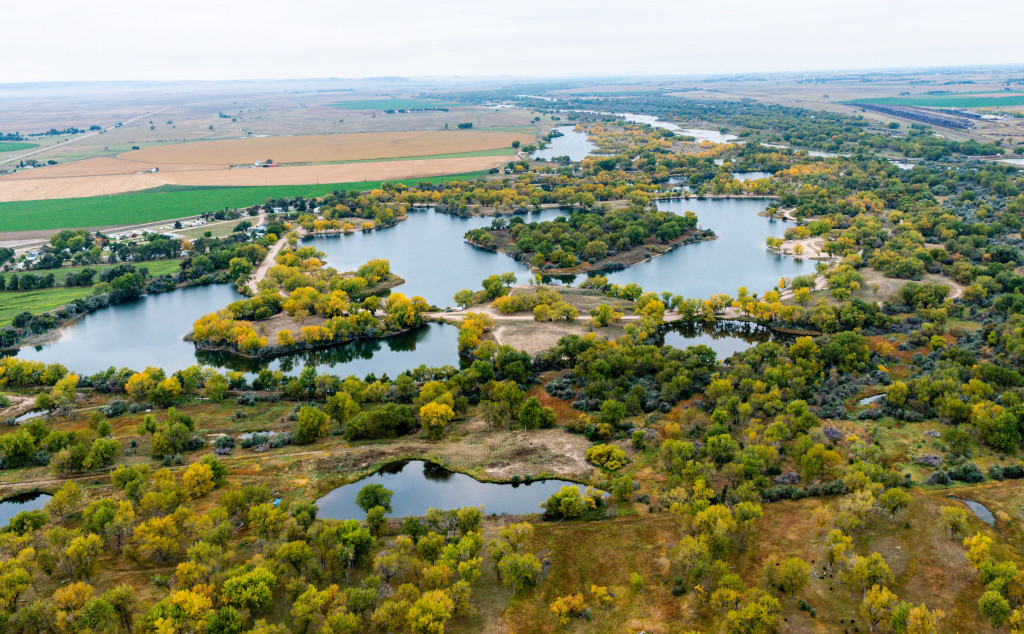
By Justin Haag
One does not have to stray far from home to enjoy one of the Panhandle’s premiere getaways with shady campsites and sandy beaches.
The 200-acre Bridgeport State Recreation Area is located along the North Platte River at the northwestern edge of the community for which it is named. It has 78 acres of clear water in five sandpit lakes with more than 70 first-come, first-served basic campsites. The lakes are listed among the Game and Parks Commission’s designated family-friendly destinations, and have long attracted boaters, campers, anglers, swimmers and picnickers.
The lakes were created by the Lyman-Richie Corp., which provided sand and gravel to the surrounding region in the early 1900s. The company was most busy in World War II, providing asphalt for the airfield in Alliance. The waterbodies were acquired by the Nebraska Game and Parks Commission in 1952.
Most of the park’s campsites are under big cottonwoods along the shoreline. Forty-five of them are on Center Lake, the largest of the five. In addition to the many drive-up campsites, six walk-in sites for tent camping are available at the park’s northwest lake.
Center Lake, which surrounds an island, allows motorized boats and personal watercraft as long as they travel counterclockwise.
Gary Shoemaker oversees the Bridgeport park in his role as superintendent of the Wildcat Hills State Recreation Area near Gering. He has ushered numerous improvements to the park in recent years.
Among the developments are an expanded swimming area at Center Lake, the addition of a campground host, and improved signage and boundaries for campsites.
Similar to most parks and public lands, Bridgeport attracted a lot of attention from people who were biding time and social distancing in the summer of 2020. He said the park nearly tripled its usual traffic last year.
“It looked like a Fourth of July crowd when we first opened in May,” he said.
Bridgeport boasts opportunity for catching a variety of fish, including bluegills, channel catfish, crappies, largemouth bass, rainbow trout, cutthroat trout, walleyes, yellow perch and northern pike.
Joe Rydell, Game and Parks fisheries biologist, said the lakes range as deep as 15-20 feet, providing ample room for fish to roam. Generally, he said sunlight moves fish into deeper water midday, but they swim shallow early and late.
“There are several shallow humps and ridges that run around the pits that typically have chara, a type of algae that looks like rooted vegetation,” he said. “The trout will roam the open water, but panfish and bass utilize those chara areas to roam for food and cover. Fallen trees are also good habitat along the shores.”
